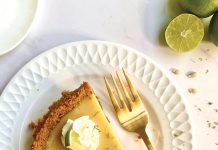Champagne is a mirror of the good life in all its forms—the beverage we choose for celebration and commemoration, to mark a milestone or to reward ourselves for a job well done. For those times when only the rarest and finest will do, here are three top choices:
Krug
It’s fitting that Olivier Krug was chosen to be the featured vintner at this year’s Naples Winter Wine Festival. For six generations, Champagne Krug has epitomized excellence, providing a special experience prized above all others. The house was founded in 1843 by Johann-Joseph Krug, an immigrant from the German city of Mainz.

“My great-great-great grandfather had a vision,” Olivier says. “He knew that Champagne was about pleasure. His dream was to create Champagne that would be superlative every year, regardless of the quality of the vintage.”
There are many factors that set Krug apart, but the most important is careful and artful blending, which is responsible for the wine’s complexity, harmony and finesse. The cornerstone of the production is Grande Cuvée ($210), referred to by some as a “multi-vintage” rather than nonvintage Champagne, containing wines from at least 10 different vintages, some of which are as old as 15 years.

 Salon
Salon
In the early years of the twentieth century, a Parisian furrier named Eugène Aimé Salon had a vision. He was convinced Chardonnay grapes from Le Mesnil-sur-Oger could produce Champagne of great elegance and so superlative that it wouldn’t be necessary to add the customary Pinot Noir or Pinot Meunier. Today, most connoisseurs believe he was right.
He began making Champagne solely from Chardonnay grapes, a wine he shared only with friends. The first commercial release of Salon was 1921; there were a total of 37 vintages made during the twentieth century, an average of four per decade. The wine is powerful and ripe, with prominent acidity and a strong mineral underpinning. It’s not easy to find and averages $350 per bottle when available, but it is one of the most singular experiences in the world of Champagne.
Dom Pérignon Oenothèque
 This isn’t the stuff you buy at Costco. At rare intervals, the house of Moët re-releases exceptional vintages of Dom Pérignon, Champagne that has rested comfortably in the cellars of the châteaux at Épernay. They are disgorged before release and typically have a lower dosage (sweetness) level than the regular Dom. These bottles are rare gems, and prices reflect that: They start around $400 for recent vintages and climb as high as $1,600 for older years. The even rarer Oenothèque Rosé hovers around $1,000 per bottle.
This isn’t the stuff you buy at Costco. At rare intervals, the house of Moët re-releases exceptional vintages of Dom Pérignon, Champagne that has rested comfortably in the cellars of the châteaux at Épernay. They are disgorged before release and typically have a lower dosage (sweetness) level than the regular Dom. These bottles are rare gems, and prices reflect that: They start around $400 for recent vintages and climb as high as $1,600 for older years. The even rarer Oenothèque Rosé hovers around $1,000 per bottle.
Several years ago, I had the opportunity to taste the 1990 and 2000 Oenothèque Rosé with Vincent Chaperon, winemaker for Dom Pérignon, who works under Chef du Cave Richard Geoffroy. Chaperon is a self-described risk-taker who views the process of creating Dom as an existential challenge.
The 2000 is full-bodied and elegant in the mouth, with expansive flavors of wild strawberry and red raspberry. The most remarkable aspect of the wine is its finish. Rich and haunting, it seems to continue for a full minute. As good as it is, it pales next to the 1990, which has an amazing nose of pastry dough, tropical fruits and candied red berries, along with whiffs of mushroom and truffle. It is intense and complex on the palate, with unfolding layers of rhubarb and red fruits. And the finish? I’m still thinking about it, and that’s what I call length











Facebook Comments